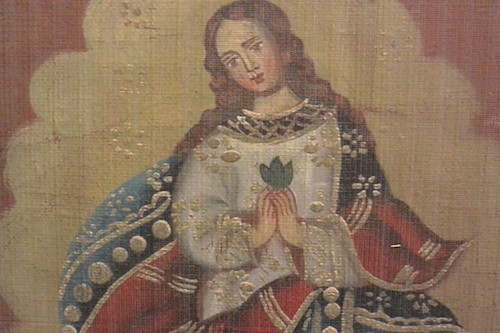In the high mountain regions of the Andes, altitude sickness can set in, make you lethargic, nauseous, and giving you a headache. Locals have combated altitude sickness for thousands of years by chewing native coca leaves, the same plant that’s used to create cocaine. During my time in the Andes, I had taken up this practice myself and found it to be incredibly effective, without the many side effects of high altitude medicine (hearing loss, increased body hair, etc.). I also really enjoyed the taste of the raw leaf, which is very green tea like. It seemed like a natural progression to try coca liquor while I was in the Andes. When in Rome, or Peru, right?
The coca leaf is taboo in the U.S. because of its connection to cocaine, but in its natural state, it has a number of healing properties. It can suppress hunger, soften pain, fight fatigue…Coca tea was popular in South America long before the rise of the Incas or the conquistadors came barreling in. A timeline in the Coca Museum in Cusco, Peru dates human use of coca as early as 5000 B.C.
The Virgin Mary holding a Coca leaf
It was first infused with wine by a Frenchman, Angelo Mariani in 1863 and was a trendy cure-all elixir during that same time period. It’s been used in the recipe for Coca-Cola for more than a century, and is still used to this day by the soft drink company, according to the museum. It wasn’t until an American chemist, Park Davis, produced cocaine in 1884 that the whole name of the game changed.
Locals in Peru still chew the leaves to combat altitude sickness, but rarely bother with the coca liquor (they seem to prefer beer), which is more popular with western tourists. When I tried the liquor, I was staying in Puno on Lake Titicaca—the highest navigable lake in the world, with a name that has the 12 year old in me snickering jovially. Puno, in Southern Peru near the Bolivian border, sits at 12,556 feet above sea level. There’s not much going on in the town as far as bars, so my friend and I grabbed a bottle of Reserva Del Inca, a coca liquor, to bring back to our hotel.
We sat on our balcony overlooking Lake Titicaca, which sparkled in the evening sunlight, sipping the Reserva Del Inca. It had a silky texture. I expected a moonshine-style invasion of the throat, and was surprised by the softness of it. The liquor was infused with anise, giving it a licorice-flavor akin to Sambuca. The coca leaf flavor itself was slight, nestled with the anise and sweetness. Overall, it’s a gratifying sipping liquor, something that would work well at the end of a meal as a digestive.
The buzz was warm and heady, but packed a caffeine-esque punch. I noticed my speech switch into overdrive. I was happy to chat at an accelerated rate, like I was on my third espresso shot. It sure as hell beats a Red Bull and Vodka.
